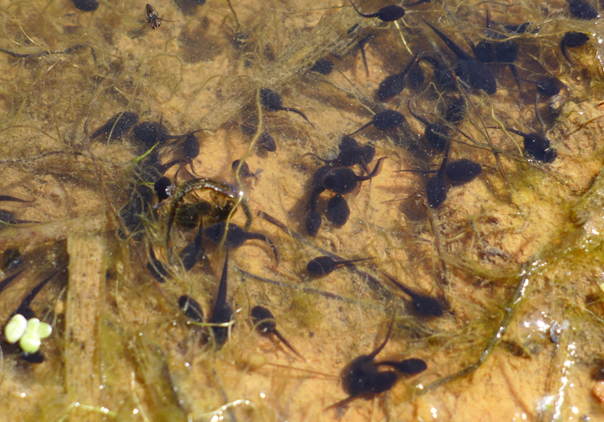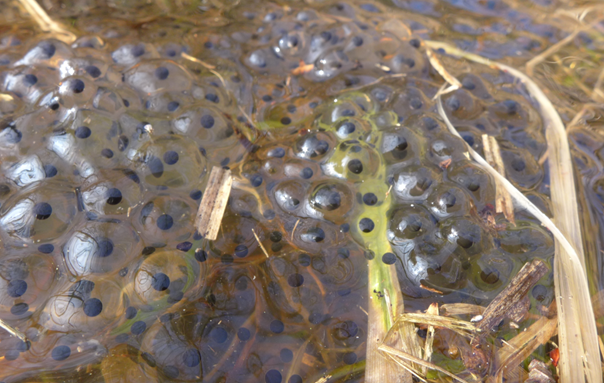In this post, Mirco Bundschuh and Carsten Brühl talk about a recent publication assessing the impact of fungicide-induced changes in food quality on the development and metamorphoses of the European common frog (Rana temopraria). This work is published open access in Ecology and Evolution. Relevant data is made available to the research community through dryad.
Readers of this blog are likely familiar with the fact that fungicides are one pillar of the plant protection strategy of farms, with frequent applications in vineyards. However, not all fungi are pest species and many play important roles in decomposition of organic matter. The ability of fungi to fulfill their roles may be impaired by the off-site transport of fungicides during (e.g., spray drift) or after (surface runoff) application.
In the aquatic environment, fungi colonize dead plant material (detritus) and turn it into a nutritious food source for shredding organisms. In the past, we mainly worked with invertebrate shredder such as gammarids, asselids, and caddisflies. In those studies, we were able to document bottom-up effects with fungicides changing the leaf associated microbial community leading to implications on the growth and physiology of these invertebrates (see also this post).

Literature, however, also points towards a similar feeding strategy of aquatic larvae (tadpoles) of some amphibians such as the European common frog (Rana temopraria). To close this gap, two working groups at the iES joint forces and performed a study for eleven weeks to understand the bottom-up impact of a fungicide mixture on those tadpoles via an altered leaf-associated microbial community.
Indeed, the fungicide mixture changed the profile of fatty acids pointing towards change (though not statistically significant) in the microbial community and – even more importantly – the quality of leaf litter as food for higher trophic levels. Tadpoles fed with fungicide-exposed leaf litter showed a different development over time and entered earlier into metamorphosis relative to control organisms. These data point towards qualitative and temporal changes in the transfer of energy from aquatic to terrestrial ecosystems deserving additional attention in future research as partly realized within the graduate school SYSTEMLINK.

Indirect effects of fungicides on food availability of aquatic larvae and the resulting impact on amphibian populations also deserves attention in the development of an environmental risk assessment strategy for amphibians as part of the regulation of pesticides in Europe.
The paper “Bottom‐up effects of fungicides on tadpoles of the European common frog (Rana temporaria)” is authored by Mirco Bundschuh, Jochen P. Zubrod, Theo Wernicke, Marco Konschak, Leon Werner, Carsten A. Brühl, Patrick Baudy, and Ralf Schulz, and published in Ecology and Evolution. The associated data is shared on dryad: 10.5061/dryad.2rbnzs7mh
